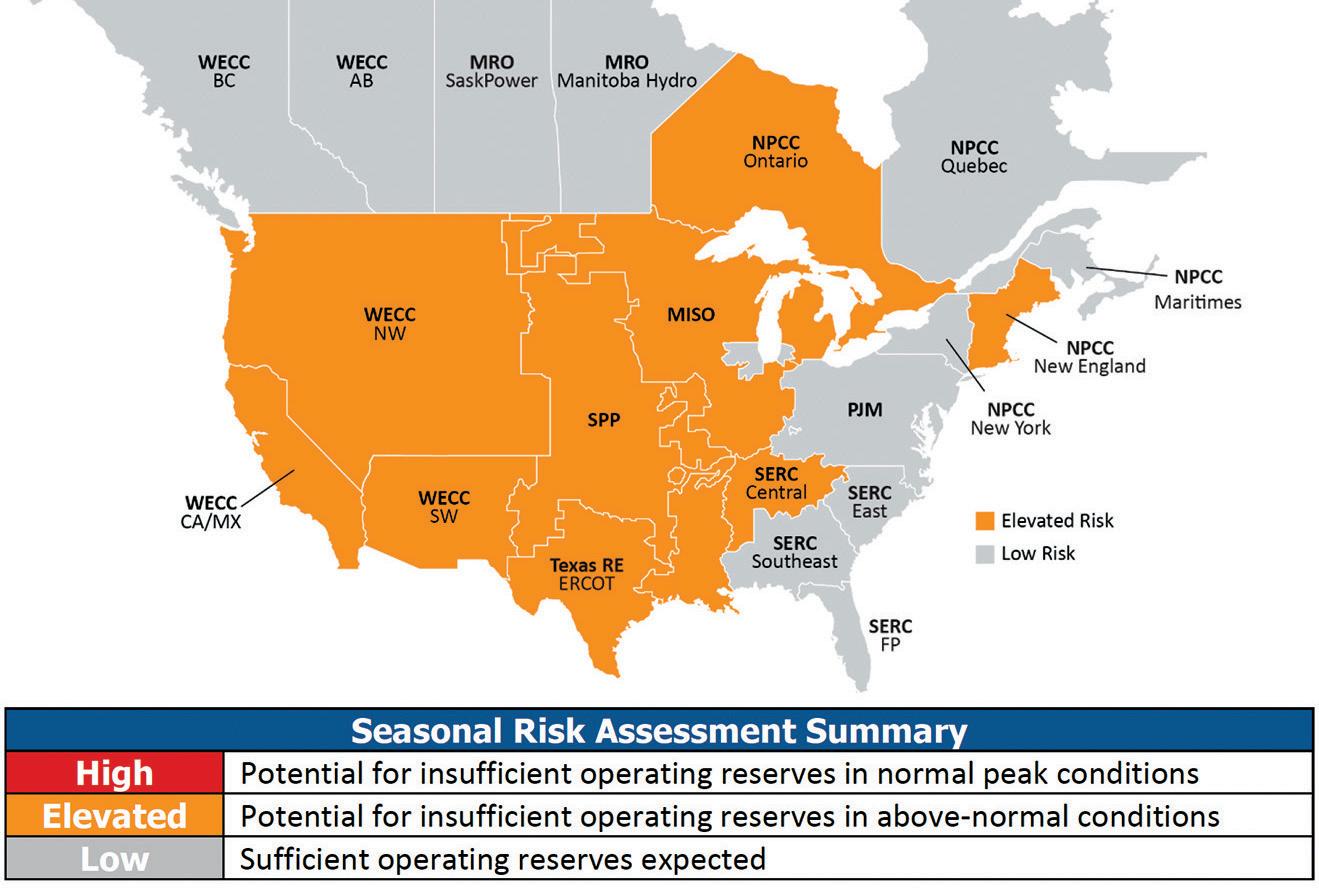
2 minute read
WattsWatt WattsWatt
In May, the North American Electric Reliability Corporation released a report outlining their 2023 Summer Reliability Assessment.
In the report, NERC warns that twothirds of North America is at risk of energy shortfalls this summer during periods of extreme demand. While there are no high-risk areas in this year’s assessment, the number of areas identified as being at elevated risk has increased. The assessment finds that, while resources are adequate for normal summer peak demand, if summer temperatures spike, seven areas — the U.S. West, SPP and MISO, ERCOT, SERC Central, New England and Ontario — may face supply shortages during higher demand levels. Corn Belt Power is a member of SPP.
The report found the following:
Areas in the U.S. West are at elevated risk due to wide-area heat events that can drive above-normal demand and strain resources and the transmission network.
In SPP and MISO, wind energy output will be key to meeting normal summer peak and extreme demand levels due to little excess firm capacity.
What does this mean for Corn Belt Power Cooperative and its member-cooperatives?
The way we generate electricity is rapidly changing. More and more, renewable energy sources like wind and solar power are coming online, while traditional sources like coal, nuclear and natural gas are being retired. Corn Belt Power Cooperative believes and advocates for an all-of-theabove energy approach. All-of-the-above promotes the idea that the United States depends on a reliable and sustainable fuel supply that includes developing and incorporating domestically produced renewable energy resources to supplement baseload generation that includes biofuels, natural gas, nuclear, hydropower and coal.
In May, SPP, Corn Belt Power’s regional transmission operator, reported that it projects enough generation to meet summer peak demand. However, if extreme hot temperatures, higher than normal outages or a high amount of uncertainty occurs, SPP may issue notifications of heightened grid conditions.

It’s important to remember that the electric grid is made up of thousands of generating stations and millions of miles of line. A power plant outage or natural disaster could have an impact on SPP’s projections. Corn Belt Power and our primary power provider, Basin Electric Power Cooperative, are well-positioned to meet this summer’s peak demand.
What is Corn Belt Power doing?
We will continue to work with policymakers and regulators on a state and federal level for a sensible all-of-the-above generation approach.
The ongoing energy transition must recognize the need for time and technology development, while including all energy sources to maintain reliability and affordability. A resilient and reliable electric grid that affordably keeps the lights on is the cornerstone of our rural economy.
Electric cooperative families and businesses rightfully expect the lights to stay on at a price they can afford. To maintain the reliability of your power supply, we must adopt an all-of-the-above strategy that includes renewable energy as well as dependable resources we have come to rely on like coal, natural gas, nuclear, and hydropower. This diverse energy mix is essential to meeting those expectations day in and day out.
We are keenly aware that the sun doesn’t always shine, and the wind doesn’t always blow. While we support Continued on page 4...



